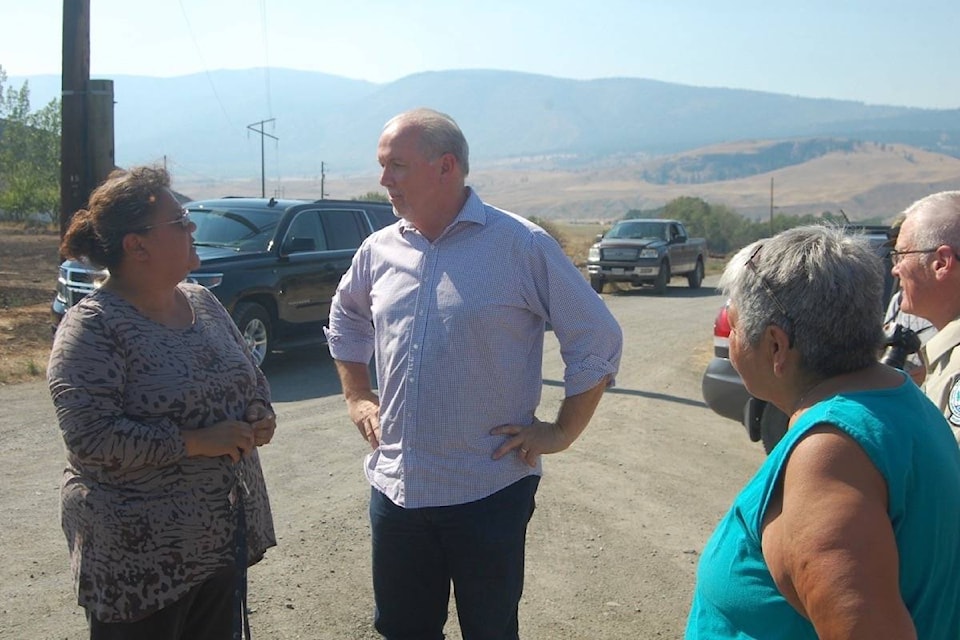Making more and better use of traditional First Nations knowledge, recognizing Indigenous governments as equal partners, better and more sensitive communication, and providing more education for bands to help them deal with disasters were among the key recommendations of “Addressing the New Normal: 21st Century Disaster Management in British Columbia”, the report and findings of the BC Flood and Wildfire Review.
“We’re all in this together,” says Maureen Chapman, Hereditary Chief of the Skawahlook First Nation who—along with former Liberal MLA and cabinet minister George Abbott—headed up the review.
“Government to government relations were acknowledged, but we weren’t included. We need to work together [in a disaster], because if we’re in jeopardy that will help everyone.”
The report makes 108 recommendations for dealing with future disasters, and many of them focus on ways in which to work with First Nations, include them in the process, and use their traditional knowledge to help in mitigation and response.
Chief among the recommendations is the use of prescribed burns in partnership with local agencies and organizations, and Chapman says that First Nations knowledge is a key part of this.
“We’ve done traditional burning for hundreds of years to protect and refresh the land,” she notes, saying that people called firekeepers passed their knowledge from generation to generation.
“They read the land, know where to do backburns, have knowledge about where the animals are. They know how to help the firefighters who are coming in, know how fires burn.
“It was decided [by the government] in the 1930s that traditional burning was no longer useful. But it needs to be done.”
Chapman also stresses the need for better advance planning. “People had emergency plans, but they went out the window when fire was at the back door. We need a piece of paper with one phone number on it to call [in a disaster], and an emergency plan that’s simple and that people can follow. We found out after the fact that was what people were looking for, so let’s develop something that will work for us now.”
She says that throughout the five months that the review travelled the province seeking public feedback and went through online responses, she heard a lot about hostility toward First Nations people. “I’ve spoken with the RCMP so they can better prepare people brought in from other areas.
“A member from Surrey has no clue about Ashcroft. They say they’re learning from what happened, and how to be sensitive to everyone in an emergency.”
Chapman also cites lack of communication as a real obstacle. “When the fires occurred, there was a gathering of provincial elders going on, and many were advised they couldn’t go back to their communities.
“Thirty-eight elders couldn’t go home, and it was hard for them. Hotels were found to accommodate them, but there was a lack of communication, which led to trauma. If people could be co-located into a community that knows their needs it would help.”
She notes that many of the elders spoke little or no English, and there were lots of people across the board who were not connected on social media; lack of cellphone or satellite phone coverage was also an issue in some places. “We need to identify key people who can go door to door, and have a person in each First Nations community who’s responsible for communication; who can reach out to families and assist to make things easier.”
Training in Emergency Operation Centres and Emergency Social Services is another area that Chapman would like to see focused on. “We had to study acronyms, know what people were talking about. The ministries speak their own language.”
Chapman says the idea is that “We’re all equal players here, so let’s work together. But there are still the prejudices. They’re subtle, but we need to get beyond that. I think there is some education that needs to be shared.
“We’re not that different. We all care about our families. When we cut our finger, we all bleed. People are amazing; they care about each other. We protect ourselves, our families, our environment. It’s all our responsibility to work together and do the best we can.”
The report “Addressing the New Normal”, containing all 108 recommendations made to government, can be read and downloaded at http://bit.ly/2KXpLO2.
editorial@accjournal.ca
Like us on Facebook and follow us on Twitter
